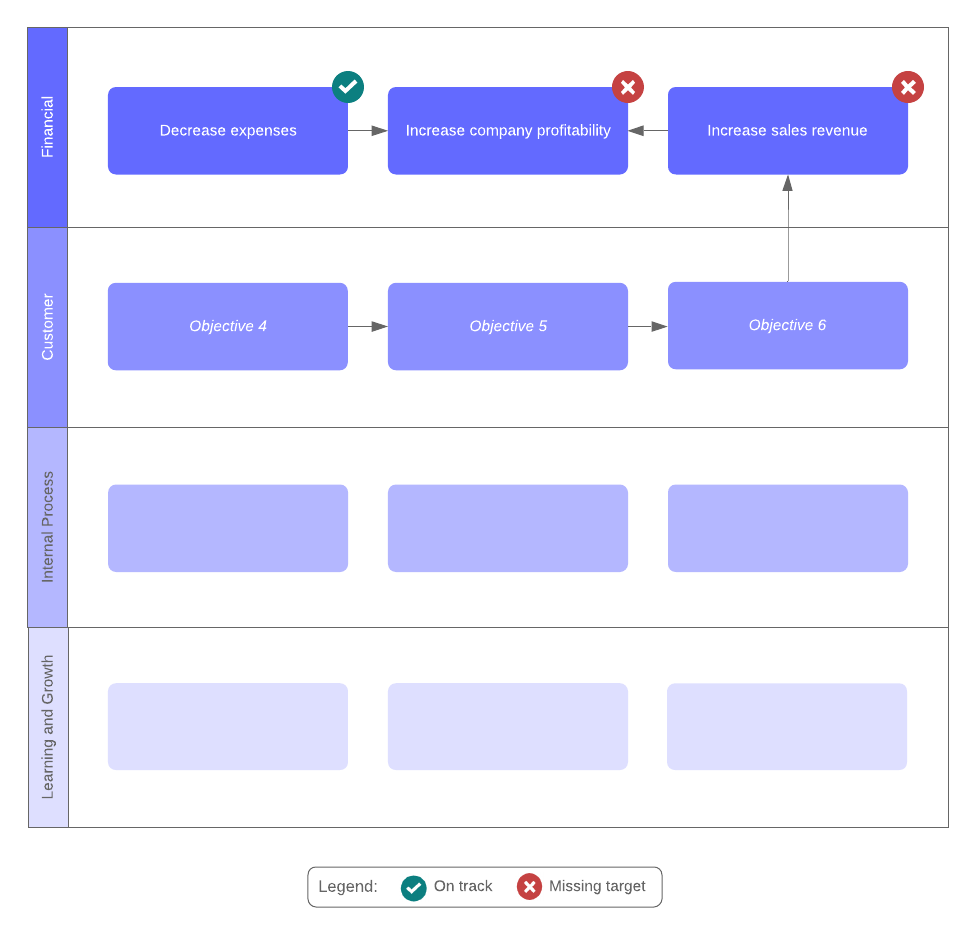
3 best practices to revitalize your product strategy process
Reading time: about 7 min
What is a product strategy?
A product strategy addresses two things: the goals a company has for its product and the actions needed to meet those goals. Comprehensive product strategies address product audience, goals for the product throughout its lifecycle, and product differentiation in the competitive landscape.
Bringing a new product to market can be an exhilarating journey. From idea generation and the early stages of product development to market testing and seeing your vision come to life, there are many exciting steps that comprise the product strategy process.
Yet, many aspects of developing a product strategy can also be quite overwhelming, especially when it comes to deftly positioning your new (or recently improved) product to address the unique needs, concerns, and challenges of your customers—all within a timely release schedule that gives your product an edge in a crowded marketplace.
In this article, we will highlight three best practices you can use to revitalize your product planning process, helping you reach your business goals, address market changes, overcome new obstacles, and achieve more success by outcomes rather than outputs. We’ve included several product strategy examples to kick-start your analysis of your own products.
What is product strategy?
A product strategy addresses the goals a company has for its product and the actions needed to meet those goals. Comprehensive product strategies should answer four key questions:
- Who will the product serve?
- How will the product benefit those consumers?
- What are the main goals for the product throughout its life cycle?
- How will you differentiate your product from the competition?
The answers to these questions will help establish your product strategy template. Think of your product strategy as an end-to-end vision or roadmap for your product. Within this product strategy definition, you can quickly form a system of measurable goals.
Depending on your particular product or industry, this system might include setting times and dates to complete your prototype, allocate resources, and develop a marketing plan to go to market.
Like any roadmap, your product strategy will have its share of unpredictable detours and unavoidable barriers to navigate along the way to your destination. This is where the three best practices to revitalize your product strategy process will come in handy.

Explore our product roadmapping software and start developing your product strategy.
Try it nowTips for developing a product strategy
1. Stand apart by offering a solution, not just a product
Think about the world’s most memorable and iconic products. Venerable brands such as Coca-Cola, Apple, and IKEA are likely among the names that readily come to mind.
Why are these products popular? Especially with so many similar items on the market. They stand apart because their product strategy is to satisfy basic human needs, like:
- The need for belonging or to identify with a group
- The need to be understood or express ourselves
- The need for accomplishment and independence
Coca-Cola was never just a beverage company. Even its proprietary bottle reflects its status as a distinctive brand with a global mindset. Apple offers more than smartphones and laptops—it represents a lifestyle and creative ethos. As the first $1 trillion US public company, no one has changed the way products look, feel, or work more than Apple.
With IKEA, people aren’t just buying furniture with a minimalistic design aesthetic. They are fulfilling a sense of achievement from working with their hands or exerting frugality.
Such distinctions offer customers the type of value that competitors can’t easily match. And the solutions your offer are not limited to product features or traits. Your product strategy might play upon the convenience derived from your company’s ability to secure prime retail-shelf space or its use of customer-data mining to help create new products.
Solving problems creates value. And value will always help your product stand apart.
Within your product strategy, ensure that you can identify the problems your customers face and the solution your product provides. If this proves difficult, take time to reassess.
RELATED: Learn how to build a product roadmap in Lucidchart to better understand what your customers and product needs.
2. Quickly adapt to industry changes so you don’t become a “one-hit wonder”
People naturally gravitate toward products (and companies) that offer value that others can’t match. This value isn’t just tied to cost. It’s how a product continues to differentiate itself from its competitors or how a business strives to stay relevant to its customers.
Customer loyalties change. So, if you already have a successful product, resist the urge to become complacent. Situational awareness should be part of your product strategy.
And if change or disruption within your industry leads to an opportunity, capitalize on it.
Case in point. Today, “on-demand” is part of the everyday vernacular. But according to Variety, those now-familiar words were dismissed by one-time Blockbuster CEO John Antioco as he abruptly ended negotiations with a “very small niche business” in 2000.
That business was Netflix. Its founder, Reed Hastings asked for $50 million to give up his company. In 2018, Netflix went on to post its largest ever US profit—$845 million.
As for Blockbuster—by January 2014, all 300 of its US corporate-owned stores would close. At one time, it had dominated the video rental business. But its leadership failed to recognize the opportunity in acquiring Netflix’s burgeoning DVD-by-mail business.
Unlike its predecessor, Netflix would not be a one-hit wonder. It would shift its product strategy to adopt online-streaming and start creating original programming of its own.
Industries quickly change—so do customer loyalties. As you can see from these product strategies examples, you need to be ready to change or adjust your product offering accordingly. And always take advantage of opportunities for quick wins.
3. Use self-disruption to inspire sustainable growth and innovation
Nothing lasts forever. Market demand and sustained growth are no different.
Eventually, people’s interests change. The once-large audience for your product begins to diminish and is slowly replaced by a new generation of consumers. One with different tastes and perspective. Inevitably, the demand for your product completely stagnates.
In this situation, it seems you’ve become a victim of your product’s one-time success.
As growth-strategy consultant and acclaimed author Clay Christensen describes in his best-selling book, The Innovator’s Dilemma, if you work in technology, you know the life cycle of products is on endless repeat. Basically, it looks something like this:
- Your new product is a success and builds an audience.
- A newer product emerges and ups the innovation ante.
- These usurpers also grow, only to be displaced as well.
Christensen suggests that sustainable growth comes from aggressively seeking to kill your cash cow before someone else does. Instead of trying to protect what you already have, your efforts to innovate may need to destroy it. Once you are willing to cannibalize your existing audience, you can have a product strategy that can survive in the long-term.
Steve Jobs once said, “If you don’t cannibalize yourself, someone else will.”
Sure, the iPhone cannibalized much of Apple’s iPod business. And the iPad cannibalized the sale of Macs. Yet, the product strategy championed by Jobs prevailed because he recognized the larger audience he wanted to capture—the massive Windows market.
If Jobs had limited his ability to innovate new products out of fear of losing market share for its flagship iPod and Macbooks, would Apple be the successful company it is today?
As the world’s largest book retailer, Amazon made a similar decision when it released the Kindle—knowing that it would take away from the audience that purchased physical books. But they also knew that if they didn’t offer a digital product, someone else would.
Be fearless in your product strategy. Your innovative new product might disrupt existing sales. But then, you are the ones who are keeping innovation central to your company.
Putting it all together—your product strategy roadmap in action
Taking a product from idea to reality doesn’t happen overnight. At each stage of product development, you must be willing to innovate, adapt, and make changes. By developing a product strategy, you will be better equipped to achieve your company’s objectives.

Solidify your strategy by creating a product roadmap.
Learn howAbout Lucidchart
Lucidchart, a cloud-based intelligent diagramming application, is a core component of Lucid Software's Visual Collaboration Suite. This intuitive, cloud-based solution empowers teams to collaborate in real-time to build flowcharts, mockups, UML diagrams, customer journey maps, and more. Lucidchart propels teams forward to build the future faster. Lucid is proud to serve top businesses around the world, including customers such as Google, GE, and NBC Universal, and 99% of the Fortune 500. Lucid partners with industry leaders, including Google, Atlassian, and Microsoft. Since its founding, Lucid has received numerous awards for its products, business, and workplace culture. For more information, visit lucidchart.com.
Related articles
How to build a House of Quality (QFD)
Quality function deployment (QFD) provides a clear framework for incorporating the voice of the customer into product development, beginning with a matrix called the House of Quality. Learn how to build a House of Quality (plus try a template).
Define your business with a strategy mapping template
Learn how you can use a strategy map to turn your organization’s mission and vision into actionable objectives. Includes a free template!
